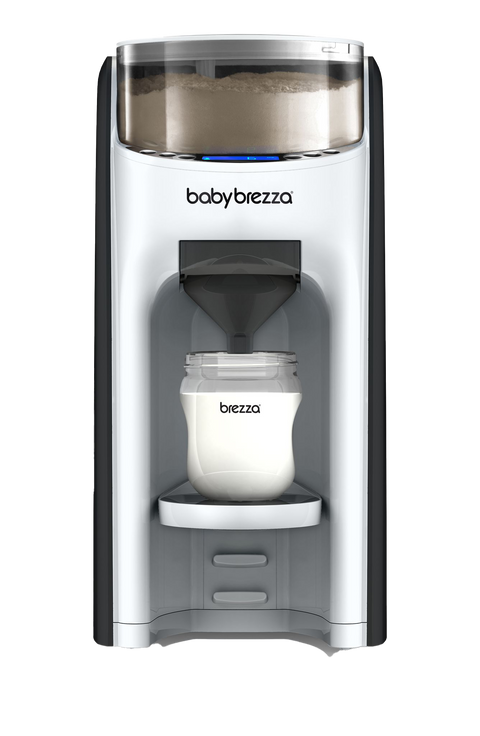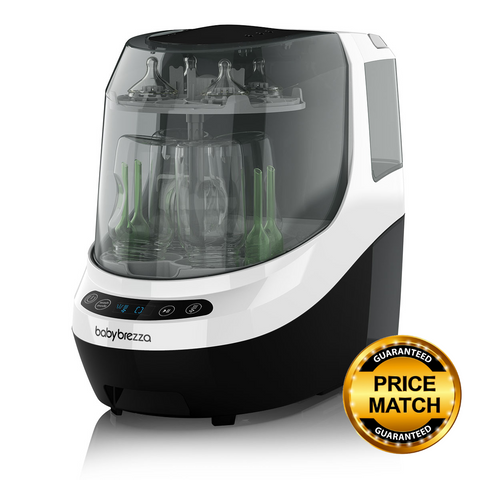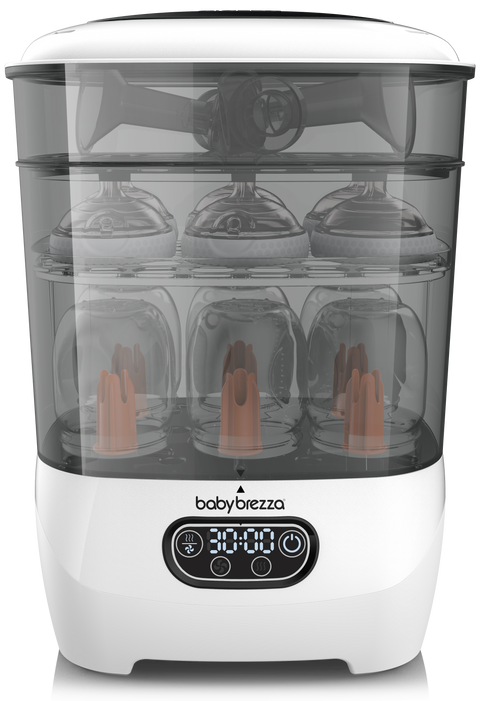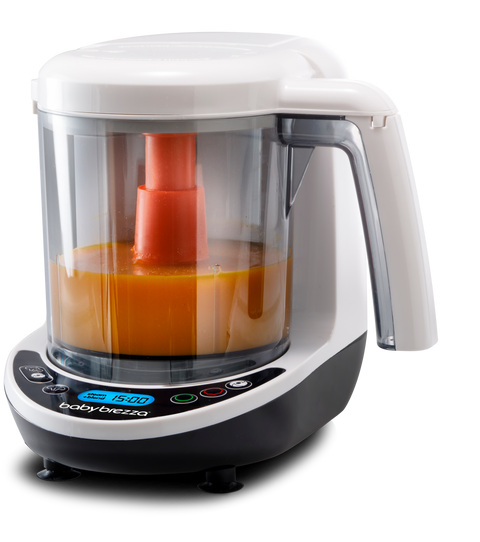Making the transition from breastmilk or formula to solid foods can be an exciting time for you and your baby. However, it can also be confusing to know when your baby can eat certain foods and textures. This guide will break down the baby feeding stages and recommend foods at each level. While this food can be store bought, making homemade baby food is a fun and healthy way for you and your baby to bond.
There are many benefits to making homemade baby food instead of buying it from the store. Homemade baby food is healthier, better for the environment, and is usually less expensive. When making your own baby food you are able to control all of the ingredients, so it will never include preservatives. Our One Step Food Maker Deluxe takes all the hassle out of making your own baby food. Whether your baby is ready for a puree or a mash, this food maker can automatically steam and blend fruits, veggies, and meats at the touch of a button.
Stage 1: Purees (Four to Six Months)
It’s time to introduce purees to your baby when they are four to six months old. They should be able to hold up their own head, sit in a high chair, and move food to the back of their throat without difficulty. At this age, it’s still recommended that your baby should get all of their nutrition from breastmilk or formula but this is the perfect time to introduce your baby to solid foods.
You can start off with fruits or vegetables, but it’s recommended to focus more on green vegetables which have less sugar than fruits to prevent sweet tooths. Here are some baby-pleasing favorites to start with for your first purees. NOTE: you should only introduce one new food every few days to make sure your baby does not have an allergic reaction to it.
- Green beans
- Butternut squash
- Sweet potato
- Peas
- Avocado
- Apples
- Bananas
Stage 2: Thicker Consistency (Six to Ten Months)
At six to ten months, your baby should be able to swallow purees easily and you’ll notice their appetite is increasing. At this stage, your baby may also have their first teeth. Now you can start to make thicker purees and mashes for your baby. Keep in mind to only introduce one new food to your baby every few days to make sure your baby doesn’t have any allergic reaction. Common foods to introduce during this stage include:
- Oatmeal
- Quinoa
- Broccoli
- Cucumber
- Beets
- Grapes
- Pasta
- Tofu
- Eggs
- Chicken
Stage 3: Chewable Chunks (Ten to Twelve Months)
At ten to twelve months, your baby should be eating several meals a day. Make sure you are giving your baby a wide variety of foods so that they are getting all the nutrition they need, and you can avoid them becoming a picky eater. At this stage, they are likely picking up pieces of food by themselves and wanting to self-feed. Try to introduce different textures at this stage to develop a gag-reflex.
To soften some tough-to-chew foods, try the One Step Food Maker Deluxe for an easy-to-use food steamer and mixer. This food maker can provide 3.5 cups of baby food in as little as 10 minutes, and always blends to the perfect consistency for your baby.
Common food additions at this stage include:
- Corn
- Tomatoes
- Cow’s Milk
- Citrus
- Strawberries
- Spinach







 TikTok
TikTok